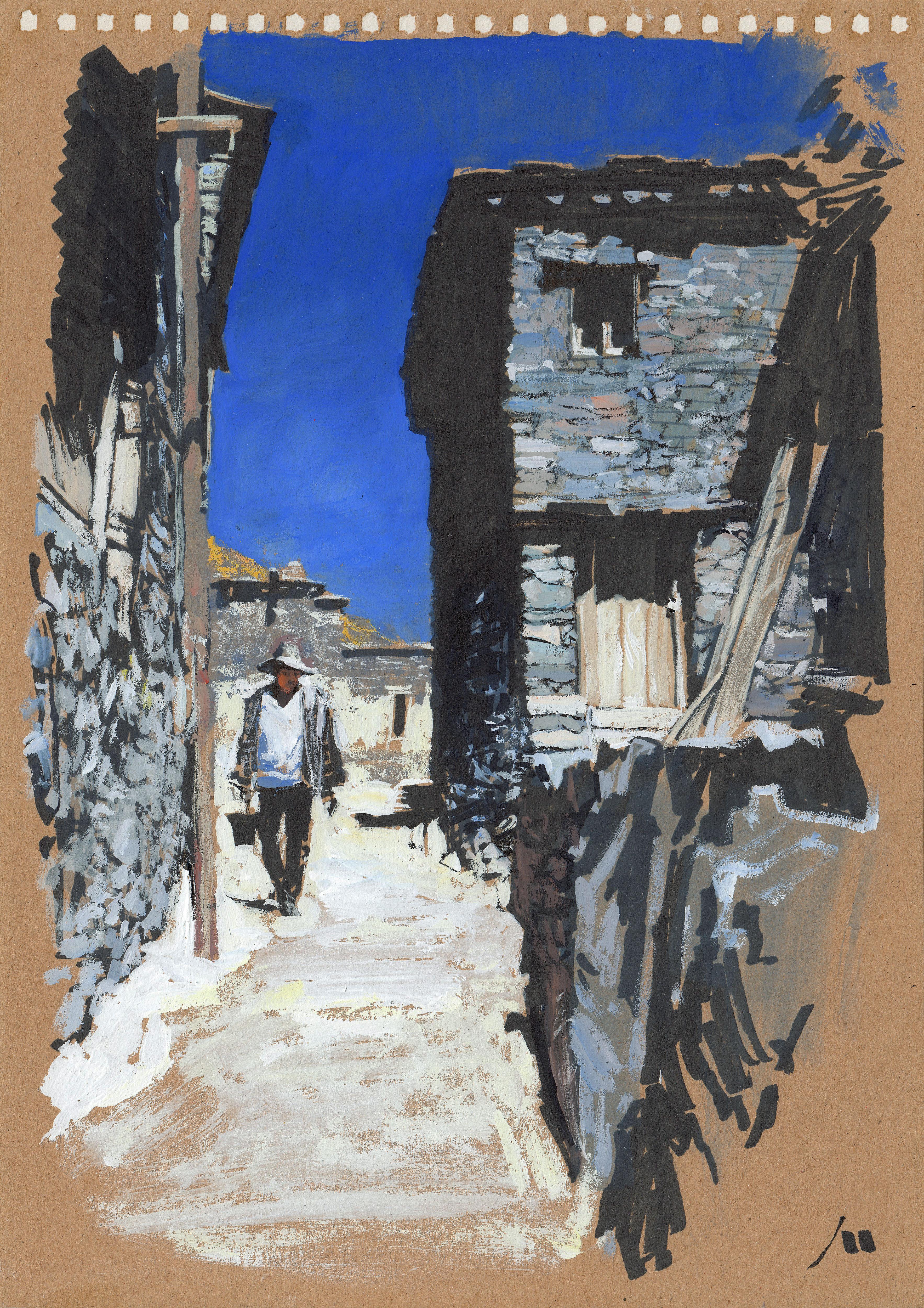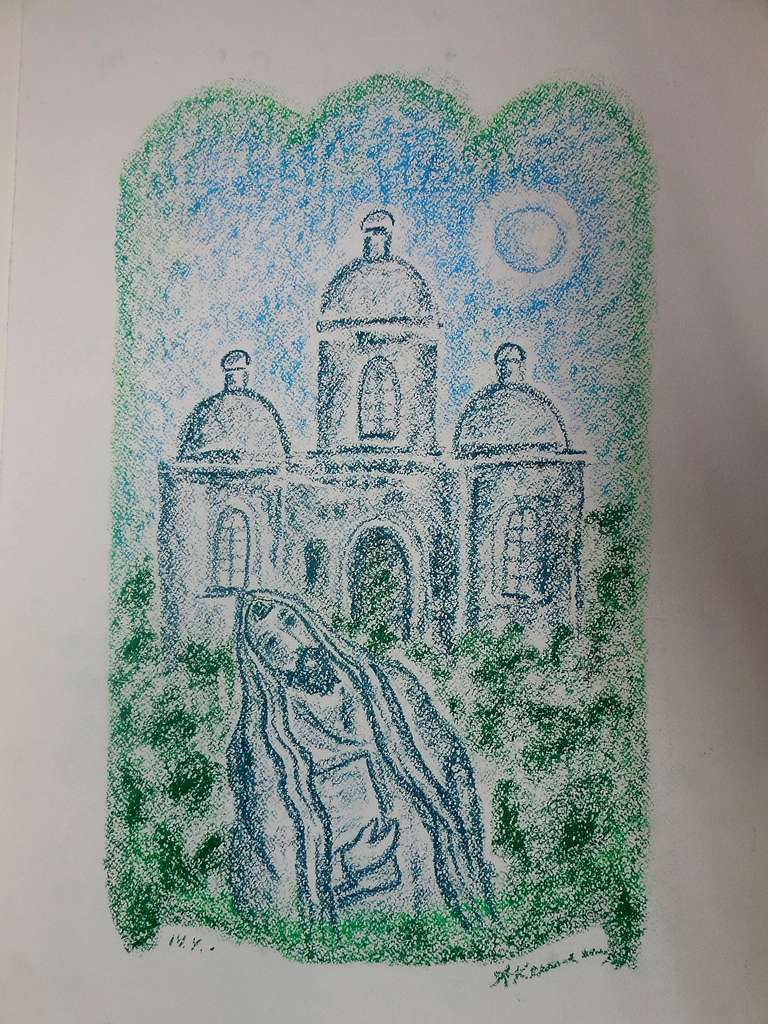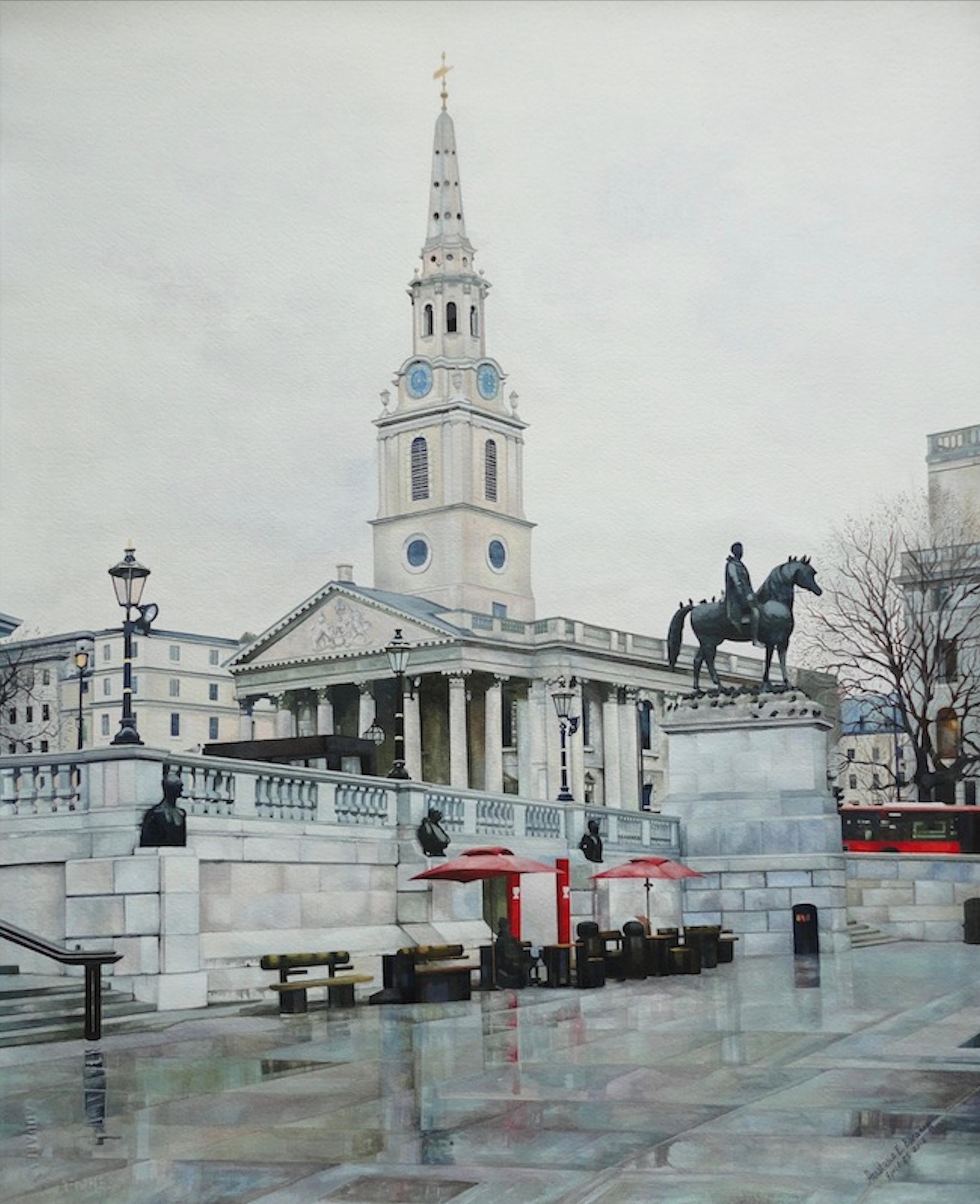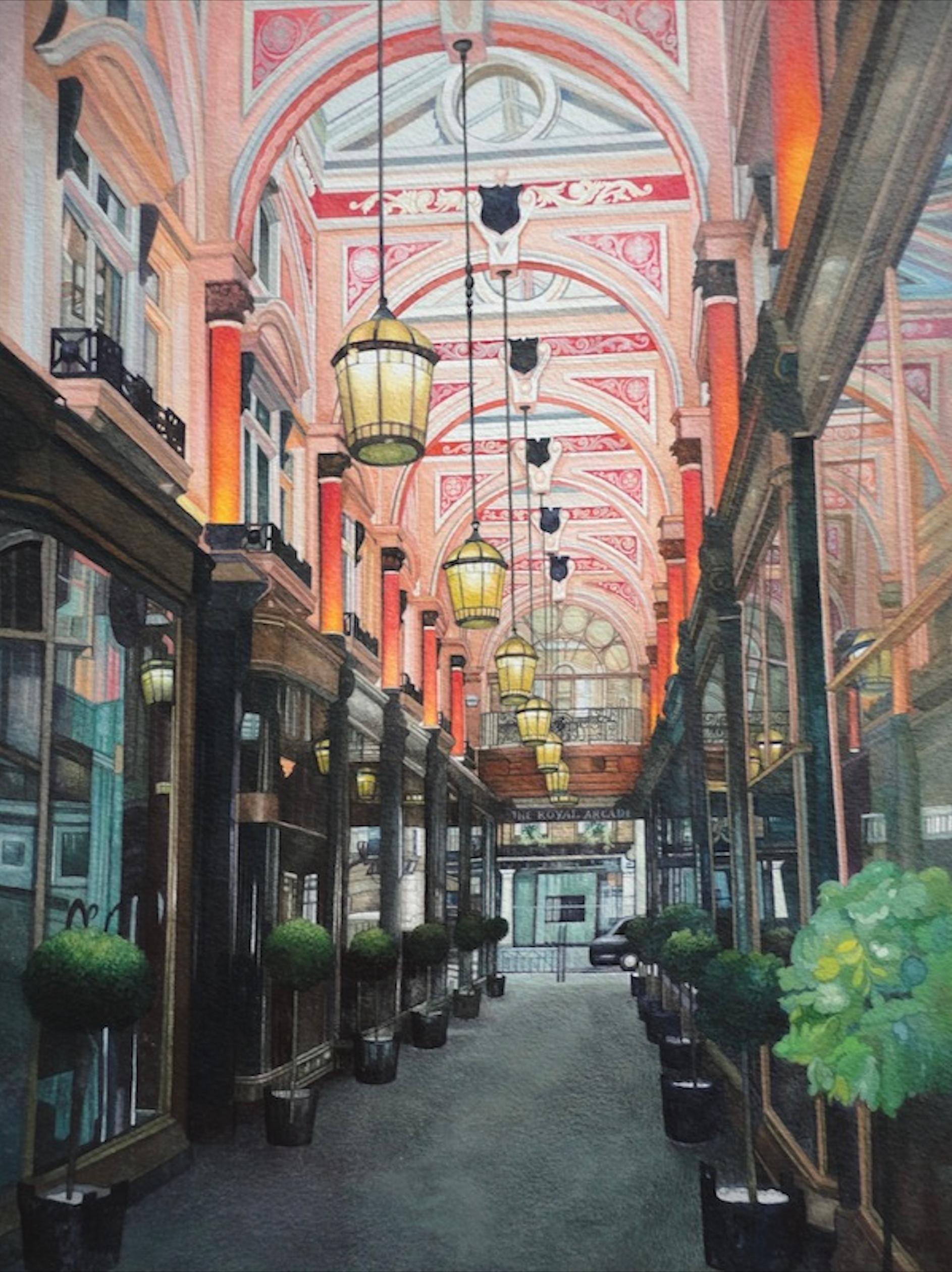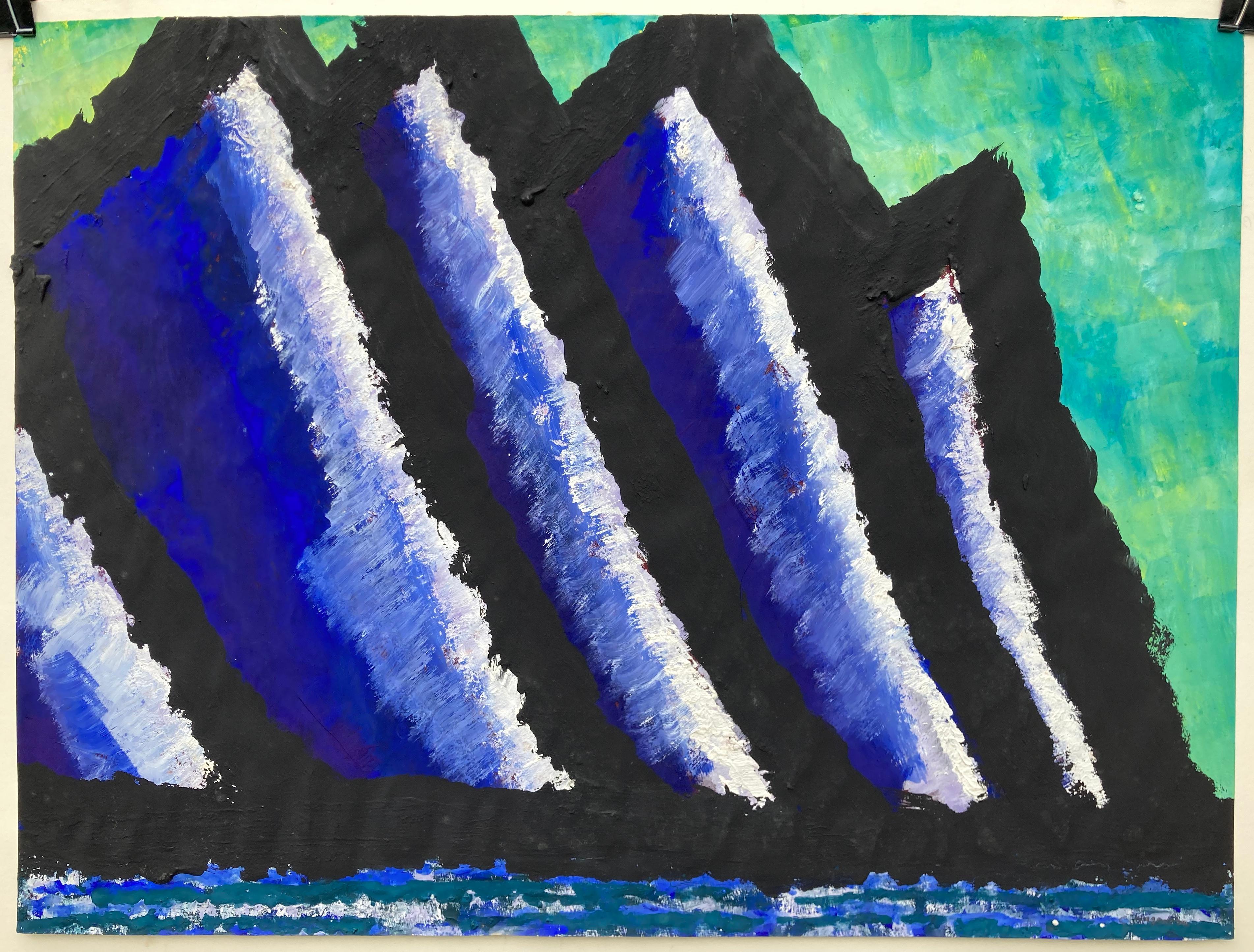Items Similar to VOLCANO
Want more images or videos?
Request additional images or videos from the seller
1 of 8
Edward HagedornVOLCANOca 1935
ca 1935
About the Item
EDWARD HAGEDORN (AMERICAN 1902 – 1982)
VOLCANO c. 1935
Thick tempera, SIGNED at the upper right corner,. Sheet & image 18 1/2 x 25 inches.
Provenance: Hagedorn estate, Around the mid 1980's The Hagedorn estate was dispersed in Berkeley by a local dealer. This painting was part of a group of Hagedorn works on paper that I acquired from that dispersal. Much of the balance was later acquired the Struart Denenberg Fine Art.
Denenberg published a very fine book on the artist's work.
EDWARD HAGEDORN: CALIFORNIA MODERNIST, RESTLESSNESS AND RESTRAINT Hardcover – January 1, 2009
Subsequently Hagedorn's works on paper have been acquired by many museums and some accompanying exhibitions.
ALL OF THE COMMENTS BELOW ARE FROM THE FOLLOWING EXHIBITION
EDWARD HAGEDORN (1902-1982)
American Modernist
A New Traveling Exhibition
“VOLCANOS, WRECKS, RIOTS, & NUDES”, EDWARD HAGEDORN (1902-1982)
premiere at the Danforth Museum. Framingham, MA, in March 2016. The exhibition includes 75 works of art in various mediums and is accompanied by the first monograph devoted to the artist’s work with essays by leading curators, critics, and art historians.
Edward Hagedorn was a true Modernist who created a trove of powerful works on paper--drawings, watercolors, oils, and original graphics that reveal the hand of a master draftsman and the mind of an astute political observer. He rejected the general trend in early 20th century California of local landscapes and coastal views, becoming virtually the single voice of Expressionism. He conveyed the darkness and upheaval that gripped the country in the depression years between the two World Wars, 1925- 1935, more forcefully than any of his contemporaries, influenced by German art of the time, engaging in modernist styles of Expressionism and Surrealism.
Hagedorn’s skeletons are ferocious yet somehow endearing; printed in deep black ink on off-white paper, they march across Lilliputian landscapes of grim disorder and destruction. Comets and volcanoes explode in fauvist colors, their other-worldly fluorescent temperas framed in black, while nude female figures, executed in exquisitely refined pen and ink, or graphite line drawings, are as economical in their means as Matisse, and can be compared with the neo-classical drawings of Picasso. Among his most lyrical works of the 1920s is a series of rhythmically abstracted watercolor and ink views of Golden Gate Park, evoking the sensual demi-geometries of Balthus, Derain , and early Mondrian.
American Modernist Edward Hagedorn (1902-1982) was born in San Francisco of German descent; his mother (née Kafka) died in childbirth, and he was legally adopted and raised by his grandmother and aunt. After attendance at the San Francisco School of Fine Arts in the early 1920s, by age 22 he had a studio in the famed "100" block of Montgomery Street ("the Monkey Block,") then a haven for bohemians.
In 1926, a year of tremendous importance in California artists' embrace of modern art, the Oakland Art Gallery, with the guidance and inspiration of their European representative Emmy (Galka) Scheyer, was the first museum in the United States to show the art of the "Blue Four," among the leading artists of International Modernism--Paul Klee, Lyonel Feininger, Alexei Jawlensky, and Wassily Kandinsky.
The overwhelming influences in Scheyer's exhibitions in Oakland and later in Pasadena, were German art movements. She appreciated the abstractionist teaching of Hans Hoffman, who later taught at the University of California, Berkeley, and his Munich students, as well as the increasing importance of Bauhaus, Dada, and Surrealist aesthetics. Hagedorn, of German extraction, was drawn to these influences. Scheyer offered to represent his work, inviting the young artist to become the fifth member of her distinguished group. He rejected her overtures. Scheyer's group of Hagedorn drawings was left to the the Norton Simon Museum, together with her important collection of works by the Blue Four, and major examples by Dix, Kirchner, Kokoschka, Leger, Lissitsky, Nolde, Schwitters, Schlemmer, and Picasso.
"Ed was an outsider, a loner, a tall thin man who walked down the street looking like a question-mark; he had no use for success," according to fellow artist Paul Carey. Financially independent from the 1930's on, having inherited a sizable income from his maternal family's insurance agency, Hagedorn made little effort to market his art, but continued to work prodigiously in the seclusion of his studio/residence in Berkeley, and was active in bohemian North Beach, San Francisco, a friend and illustrator of writer Kenneth Rexroth and poet Czeslaw Milosz.
Oakland Museum Director William Clapp was intellectually open to the entire spectrum of modernism, and in 1927 included Hagedorn's painting of a female nude wearing nothing but silk stockings. It created a scandal reminiscent of the first exhibition of Courbet's 1866 oil, "Origin of the World," or recently Robert Mapplethorpe's explicit photographs. Then critic for The Chronicle, Gene Hailey, together with a "lady's committee" demanded the painting's withdrawal in newspaper articles and in letters to Director Clapp who steadfastly supported freedom of expression. Despite attempts at censorship and disinheritance by his wealthy father, Hagedorn persisted in his convictions, and refused to withdraw the work; he continued to depict the female nude throughout his long life.
Edward Hagedorn achieved critical national acclaim exhibiting widely, and winning print competitions at the De Young Museum, the Brooklyn Museum, and the Pennsylvania Academy of Fine Art, participating as well in the Works Progress Administration (the WPA.) In the 1960s, eminent San Francisco Chronicle critic Alfred Frankenstein stated, "Hagedorn is one of the finest draughtsman I ever knew."
Some public collections holding Hagedorn's work include the Norton Simon Museum; Chicago Art Institute; National Museum of American Art, Achenbach Foundation for Graphic Art, San Francisco; Carnegie Art Institute, the Huntington Museum; Oakland Museum of Art; the National Museum of American Art, Smithsonian Instituion; Library of Congress; Whitney Museum of American Art; Getty Center; and the Fitzwilliam Museum, Cambridge, England.
Edward Hagedorn's art is a major discovery in American Modernism. He conveyed more forcefully than most of his contemporaries the darkness and upheaval that gripped the country in the years between the two World Wars and during the Great Depression. This exhibition reveals the hand of a master draftsman and the mind of an astute political observer who rejected bucolic landscapes.
Hagedorn’s images insist on eidetic registration: skeletons, ferocious yet somehow endearing, printed in dark black ink on off-white paper, marching across Lilliputian landscapes of grim disorder and destruction; comets and volcanoes exploding in other-worldly colors, their fluorescent temperas framed in thick black outline; nude female figures in exquisitely refined pen and ink or graphite line drawings, as economical in their means as Matisse or the neo-classical drawings of Picasso occasionally splashed with watercolor or pastel reminiscent of Schiele. He also created lyrical landscapes, Surrealist experiments, and homages to the female form in a compelling decades-long production of watercolors, pastels, ink, monotypes, etchings, lithographs, and relief prints. This first retrospective of the art of Edward Hagedorn reveals an artist powerfully in command of marks on paper, wryly observant of human folly; he was a gifted draftsman who created indelible images and unforgettable impressions of the most powerful forces of nature.
When Hagedorn died intestate in 1982, the bulk of his life's work was discovered in the Woolsey Street attic in dozens of boxes filled with hundreds of prints, watercolors, temperas, and drawings. Heir-finder attorneys settled a million dollars in cash and securities on a distant relative the artist had never met.
EDWARD HAGEDORN
Selected Quotes
This first retrospective of the art of Edward Hagedorn (American 1902-1982), reveals an artist powerfully in command of marks on paper, wryly observant of human folly, a gifted draftsman creating indelible images and unforgettable impressions of the most powerful forces of nature.
-Robert Flynn Johnson, Curator Emeritus, Achenbach Foundation For Graphic Arts, Fine Arts Museums of San Francisco
“….Hagedorn’s diversity…. can be described on a second level, that of the imaginative wealth of his imagery in the service of a profound, often neurotic, and politically astute content. Based in the violent and repressive politics of the 1930’s and 1940’s, the best of these images engage with European Expressionism without blindly following the style’s tenets, nor succumbing to the ironic detachment of the Neo- Expressionists of the 1980’s. Instead, Hagedorn’s images remain engaged, powerful, even forbidding.… ...Their monumentalizing quality is direct and arresting, and continues to feel surprisingly contemporary.
Dr. James Steward, Director of the Princeton University Museum, former Director of the University Museum, Berkeley--©The Regents of the University of California, courtesy Berkeley Art Museum,1996
“…..a sensibility of great formal inventiveness and fierce, almost unhinged, moral concern. In an era when artists had to assert themselves increasingly to get noticed, particularly on the West Coast, Hagedorn kept to himself. ….nudes in tempera on paper… are rendered with a bold, big-fisted simplicity that suggests a middle path between Alexei Jawlensky and Fernand Léger. “
Kenneth Baker, San Francisco Chronicle, July 10, 1996
"Hagedorn’s mystical landscape visions, closer to the expressionism of Germans such as Oskar Kokoschka and Emil Nolde than to the formalist constructs of Hans Hofmann, had a place in both worlds, the realms of the abstract painter and of the social critic. With a highly personal, idiosyncratic language, he managed to convey the darkness and upheaval that gripped San Francisco in the depression years more forcefully than any of his contemporaries."
Dr. Patricia Junker, Ann M. Barwick Curator of American Art, Seattle Art Museum; former Curator, Amon Carter Museum of Art; former Associate Curator, American Painting, De young Memorial Art Museum, San Francisco, 2009
"That Hagedorn is able to communicate terror and the terrible in the absence of impassioned or hysterical brushwork makes his take on Expressionism unique indeed – that which is most compelling in Hagedorn’s work – the restlessness and the restraint.”
Susan Kandel, Los Angeles Times, March 5, 1992
"The power of Hagedorn’s anti-war series derives from dramatic visual presence often rendered in stark black and white, his skeletons throwing grenades, sounding a trumpet, and sowing dragon’s-seed bayonets which sprout as soldiers. These all-too-human figures have a life of their own, including the revelation of their mortality as stripped flesh; they draw us back to the immediate and fresh experience of the graphic image, and that is where Hagedorn concentrated his powers as an artist."
DIckran Tashjian, Professor Emeritus of Art History, School of Humanities, University of California--Irvine, 2009
“Edward Hagedorn’s images proclaim their importance through their intrinsic graphic power and their bold simplicity. When I first encountered the work several years ago, I found it difficult to believe that such an achievement had, apparently, gone unremarked in studies of California modernist art—the subject of a book I was preparing. So there was, and still is, the excitement of discovery attached to the work of Edward Hagedorn."
Dr. Paul Karlstrom, former West Coast Director, Archives of American Art, Smithsonian Institution, 2009
- Creator:Edward Hagedorn (1902 - 1982, American)
- Creation Year:ca 1935
- Dimensions:Height: 18.5 in (46.99 cm)Width: 25 in (63.5 cm)
- Medium:
- Period:
- Condition:
- Gallery Location:Santa Monica, CA
- Reference Number:1stDibs: LU411312750272
About the Seller
5.0
Recognized Seller
These prestigious sellers are industry leaders and represent the highest echelon for item quality and design.
Platinum Seller
These expertly vetted sellers are 1stDibs' most experienced sellers and are rated highest by our customers.
Established in 1977
1stDibs seller since 2016
263 sales on 1stDibs
Typical response time: 1 hour
Associations
International Fine Print Dealers Association
- ShippingRetrieving quote...Ships From: Santa Monica, CA
- Return PolicyA return for this item may be initiated within 7 days of delivery.
More From This SellerView All
- UNTITLED MOUNTAINSBy Edward HagedornLocated in Santa Monica, CAEDWARD HAGEDORN (AMERICAN 1902 – 1982) UNTITLED MOUNTAINS, ca 1935 Tempera, Unsigned. Image 18 x 24 inches. See also 1stdibs item LU411312750272 for another example form the follow...Category
1930s Surrealist Landscape Drawings and Watercolors
MaterialsTempera
- QUEEN MARY, LONG BEACH, CA - ORIGINAL ARTIST DESIGN CONCEPT FOR PLACEMENTLocated in Santa Monica, CAQUEEN MARY, LONG BEACH, CA - ORIGINAL ARTIST DESIGN FOR THE PLACEMENT OF THE SHIP Watercolor and gouache on board, 20 x 36 inches. Signed and dated by the artist - Segroves, 1969. The original artist concept for the placement in Long Beach Harbor in 1969. Subsequently revised several times. The Queen after extensive renovation has just reopened to the public on December 14, 2022 Much larger than the Titanic, At 1,019 feet long and 81,000 tons (310 meters and 73,500 metric tons), the Queen Mary was one of the largest and most elegant ships of the early 20th century. From Wikipedia: The RMS Queen Mary is a retired British ocean liner that sailed primarily on the North Atlantic Ocean from 1936 to 1967 for the Cunard-White Star Line and built by John...Category
1960s Realist Landscape Drawings and Watercolors
MaterialsWatercolor, Gouache
- ACAPULCOBy Joseph PennellLocated in Santa Monica, CAJOSEPH PENNELL (1857 - 1926) ACAPULCO 1901-08. Colored pastel and gouache drawing on blue paper. Signed and titled in pencil in his early signature. Image 10 x 14 inches to just ab...Category
Early 1900s American Impressionist Landscape Drawings and Watercolors
MaterialsPastel, Gouache
- STREET ACAPULCOBy Joseph PennellLocated in Santa Monica, CAJOSEPH PENNELL (1857 - 1926) STREET ACAPULCO 1901-08. Color pastel and gouache drawing on blue paper. Signed and titled in pencil in his early signature. Image, 10 x 14 inches to j...Category
Early 1900s American Impressionist Landscape Drawings and Watercolors
MaterialsPastel, Mixed Media, Gouache
- CASTLE ROCK - SANTA MONICA, CALocated in Santa Monica, CATHOMAS HILL McKAY (1875-1941) ARCH ROCK - SANTA MONICA, CA c. 1925-30 Watercolor, signed lower right. Sheet 14 x 18 inches.. Additional full sheet study on verso.. Generally good c...Category
1920s American Impressionist Landscape Drawings and Watercolors
MaterialsWatercolor
- IPSWICH SHANTIESBy Arthur Wesley DowLocated in Santa Monica, CAARTHUR WESLEY DOW (American 1857-1922) IPSWICH SHANTIES ca. 1892 ink wash on paper, 13 7/8 x 11 inches (sheet). Signed lower left “Arthur W Dow”. Ex. co...Category
1890s Tonalist Landscape Drawings and Watercolors
MaterialsWatercolor
You May Also Like
- Eya Village. Piglets on the street (sketch)Located in Sempach, LUSheet from the artist's traveler album. This sketch was made live in November 2018 during expedition in remote areas of Muli-Tibet County in China with marker, white tempera and watercolor. Flattened, pasted and pressed onto a thick cardboard sheet. Signed in the lower right corner with the stylized letter "M" *** In 2021 Evgeniy Monahov...Category
2010s Realist Landscape Drawings and Watercolors
MaterialsPaper, Permanent Marker, Tempera
- Little street of Eya Village (sketch)Located in Sempach, LUSheet from the artist's traveler album. This sketch was made live in November 2018 during expedition in remote areas of Muli-Tibet County in China with ...Category
2010s Realist Landscape Drawings and Watercolors
MaterialsPermanent Marker, Tempera, Paper
- Shtetl Scene with Synagogue "Prayer"By Anatoli Lvovich KaplanLocated in Surfside, FLPastel or Tempera on paper. Judaica Shtetl scene of village. A Jew with Talith and Tefillin in front of the Synagogue. Anatoli Lwowitch Kaplan was a Russian painter, sculptor and pri...Category
20th Century Modern Landscape Drawings and Watercolors
MaterialsPastel, Tempera
- St. Martin-in-the-fields, Trafalgar SquareLocated in London, GBEgg Tempera on Watercolour Paper, signed and dated '2012' bottom right Image size: 16 x 20 inches (40.5 x 51 cm) Exhibitions Haggin Museum Stockton, California A neoclassic archit...Category
2010s Landscape Drawings and Watercolors
MaterialsEgg Tempera, Watercolor
- The Royal Arcade, A Stylish Victorian London ConnectionLocated in London, GBEgg Tempera and Watercolour Pencil on Watercolour Paper, signed and dated '2011' bottom right Image size: 12 x 16 inches (30.5 x 40.5 cm) Mounted Exhibitions American Artists Abroad The Bennington Center For The Arts Bennington, Vermont Grey afternoon London light streams through the saddled glass...Category
2010s Landscape Drawings and Watercolors
MaterialsEgg Tempera, Watercolor
- Mountain House - Drawing in Tempera - Mid-20th CenturyLocated in Roma, ITMountain House is an original modern artwork realized by Artist of the mid-20th century. Mixed colored tempera on board. Includes frame: 42 x 4 x 48 cmCategory
Early 20th Century Modern Figurative Drawings and Watercolors
MaterialsTempera
Recently Viewed
View AllMore Ways To Browse
Vintage Skeleton Print
Vintage Monkey Drawing
Mid Century Modern Surrealism Paintings
Lady Dior 2
Monkey Drawing
Vintage Skeleton Art
Vintage Sound Box
Vintage Paper Skeleton
Vintage Skeleton Drawings
Vintage Skeleton Drawing
Vintage San Francisco Street Signs
1980s Oil Painting Monumental
Vintage Monkey Print
Vintage Monkey Prints
Monkey Fist
Vintage Silk Stocking
Vintage Lady Dior Medium
Bold Monkey

